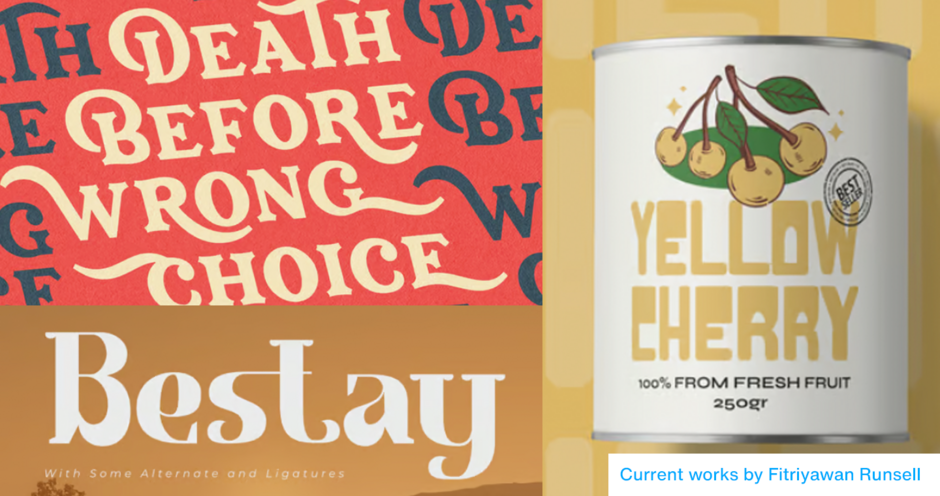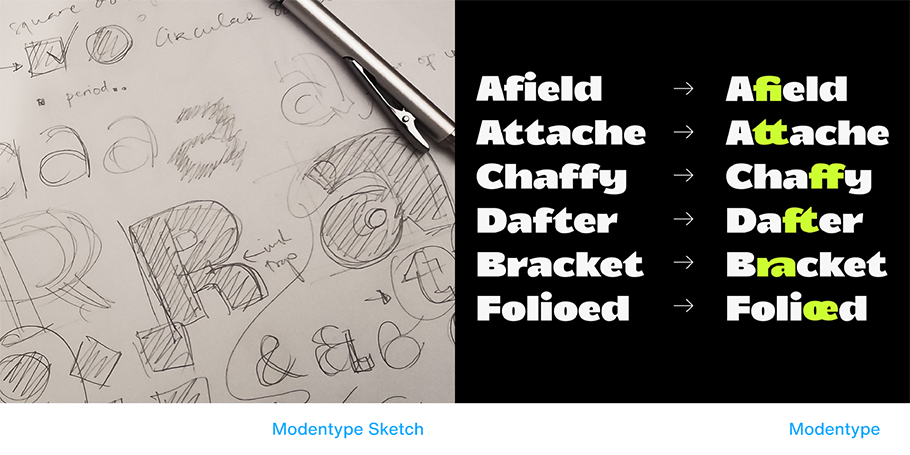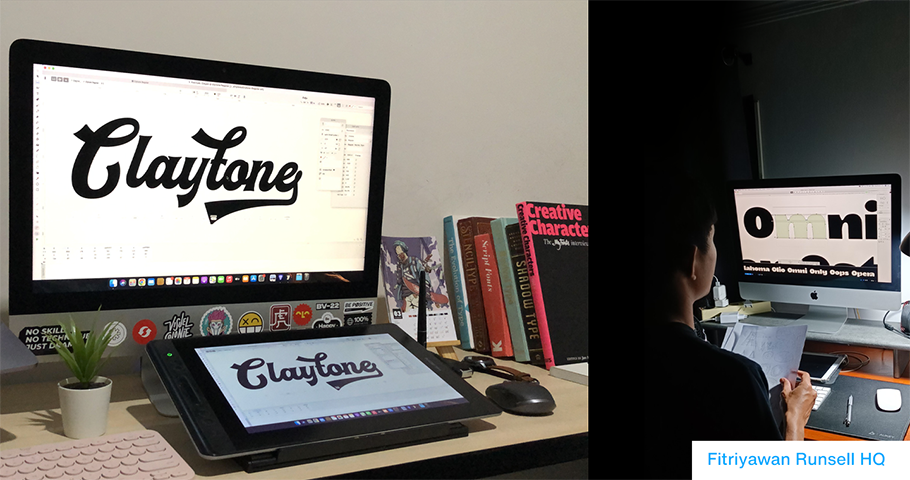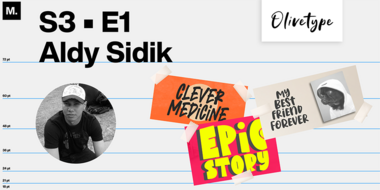Inside the Studio: Creative Characters — Runsell Type

Type and graphic designer Fitriyawan Runsell, founder of Runsell Studios, launched his Magelang City, Indonesia-based business in 2016, when he was just 24. Since then, he’s created 300+ fonts in multiple languages, ranging from Arabic to English. Recently, his foundry expanded by introducing Logofonts, a new division producing brand logos for small-to-mid-sized companies. In an email interview with Monotype, Runsell reflected on his business’ accomplishments and growth. Our conversation has been condensed for space and clarity.
MyFonts (MF): Not every foundry creates fonts in multiple languages; yours does. You began by designing in Arabic and now design in English. Can you talk about that change, and what spurred it?
Fitriyawan Runsell (FR): Runsell Studio works on all types of display fonts, including what’s actually an English-language font using Arabic style. We switched to designing in English, because I saw the international market needs English more. We started by creating one brand only for English and focused on the best way to create a logotype.
Supporting the brand is our Boldye font. It’s achieved a lot in sales, in a really short time, and it shows stability in all seasons, unlike the Arabic-style font, which has good sales only in certain seasons.
To further expand our market, we also made Logofonts accessible to all users. That concept is reflected in our tagline: “Easily create your own logo type,” meaning: any customer can create a logo from our fonts, without having design skills.
MF: What kind of challenges did you face in shifting your font language?
FR: Where there’s greater opportunity, there’s also greater competition. Many foundries design English-language fonts, making it harder for us to stand out. If we create Arabic fonts, we can focus on making the style more unique. But if we shift to English, we need to think more about how to make a font with lots of features that can fulfill user needs.

MF: What are the technical challenges of shifting not only from one language to another, but from one completely different alphabet — or set of design characters, with distinctive shapes — to another?
FR: Researching new letterforms is our biggest challenge, certainly. But we’re accustomed to making many types of display fonts, with several styles of migration/adaptation. Being in the initial launch phase of our brand, however, we’re still improving things to provide good-quality products for customers.
MF: How do you define good quality?
FR: Here, it’s a font with a good design concept (meaning: aesthetics, readability, and balanced functionality), a consistent letterform, and also proper spacing and kerning between letters and words. One of the hurdles in moving between languages and alphabets is that comprehensive testing is crucial to identify and address crossover issues. That can be a time-and-resource-intensive process.
MF: Can you tell me the story of your development as a typeface designer?
FR: Initially, I was a computer teacher. But I wanted to explore and switch my career, to grow. So I learned to make letters on my own, with some help from friends, books and Web sources. One year after launching Runsell Studio, I was joined there by my partner, Satia Hayu, who’s great with his lettering.
MF: What do you find most satisfying about developing your business?
FR: There will always be practical tasks involved, like performing typography studies, updating software, analyzing the market, staying up-to-date with trends, following design blogs and webinars in the field, and discussing font business to foster growth.
But creating new character forms or concepts is the most enjoyable. Lately, we’ve been developing a special monster font. Following’s a sample. We’re very proud of the results.

MF: What inspires you as a creator?
FR: I have two sources of inspiration: finding product solutions to customer problems, as well as making balanced works. Creating fonts is a bit like being an architect drawing a house. Both require a sharp eye for detail, proportions, and visual harmony in designs overall.
MF: What are some behind-the-scenes challenges that you didn’t anticipate on launching a creative business?
FR: Technology is developing very fast. Once, everything was done manually. Now, much of it is being replaced with amazing application updates and even AI (Artificial Intelligence). AI can speed up font creation by using machine learning algorithms to analyze and understand existing fonts, ultimately enabling the expedited generation of new fonts. But we’re confident that, for now, AI can’t replace all human capacities, like creativity, originality, intuition, storytelling, collaboration and communication. So, we’ll survive.

Give a shout-out on social media using #CreativeCharacters
We hope you enjoyed this interview. Check out previous interviews of up and coming creative characters.





